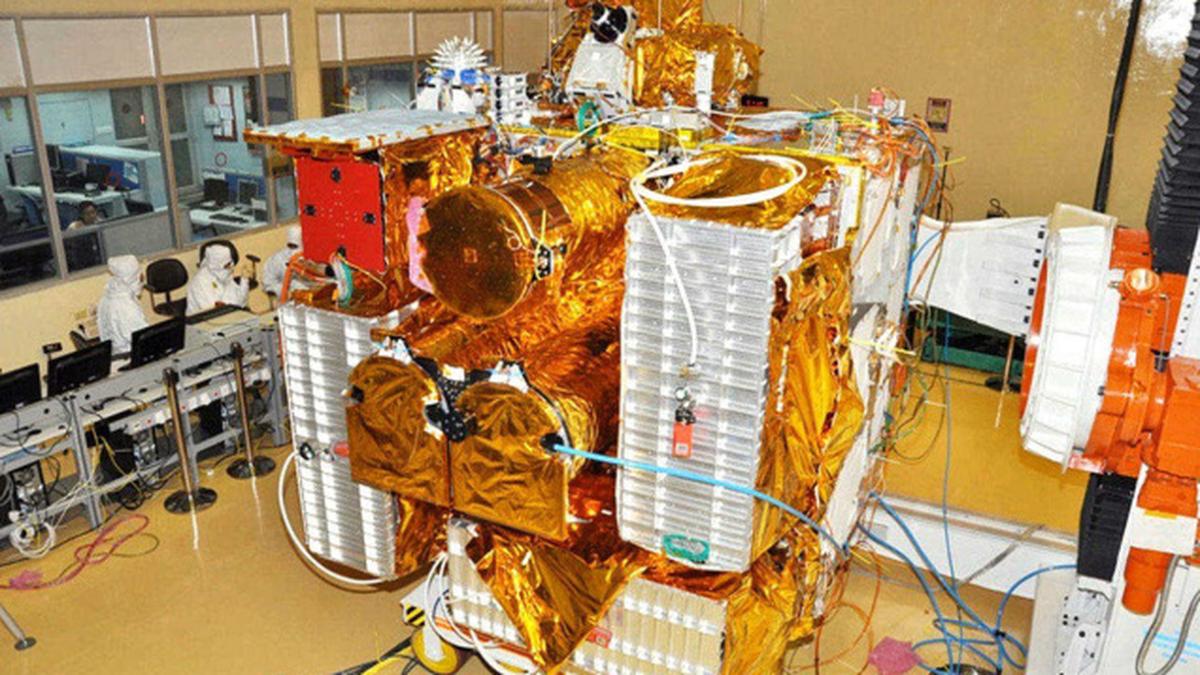The Astrosat spacecraft is seen before launch
| Photo Credit: ISRO
A: Multi-messenger astronomy is a relatively new way to study the universe by using more than one kind of “messenger” from space. For a long time, astronomy was almost entirely based on light, i.e. what we see through telescopes, across the spectrum from radio waves to X-rays. Light carries a lot of information but often it doesn’t tell the whole story.
Over the years, scientists have developed the ability to detect other messengers — including gravitational waves, ripples in spacetime caused by powerful cosmic collisions; neutrinos, nearly invisible subatomic particles created in nuclear reactions; and cosmic rays, fast-moving charged particles from outer space.

Each messenger carries unique clues. While light can show us what a star looks like on the surface, gravitational waves tell us about the violent events that created it and neutrinos can reveal what’s happening deep inside its bulk. When scientists combine these signals, they can build a more complete picture of an event.
In one famous example in 2017, telescopes around the world observed light from two neutron stars crashing together at the same time detectors picked up gravitational waves from the collision. The combined observations confirmed theories about where heavy elements like gold are made.
India itself made multi-messenger astronomy history when ISRO launched Astrosat a decade ago. By combining ultraviolet, optical, and multiple X-ray bands in one mission, Astrosat allowed scientists to simultaneously track stellar flares, black hole outbursts, and neutron star activity, revealing astrophysical processes that single-wavelength observatories couldn’t.
Published – September 28, 2025 01:30 pm IST
